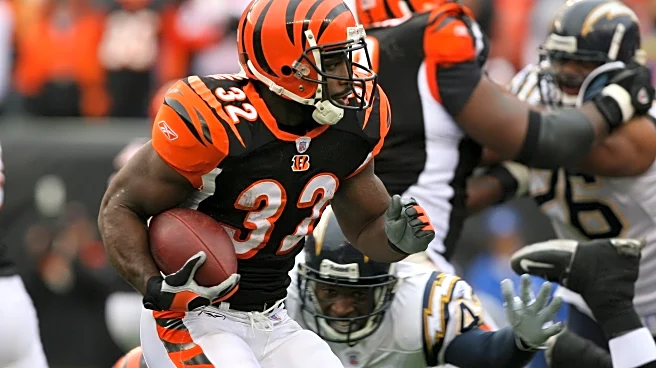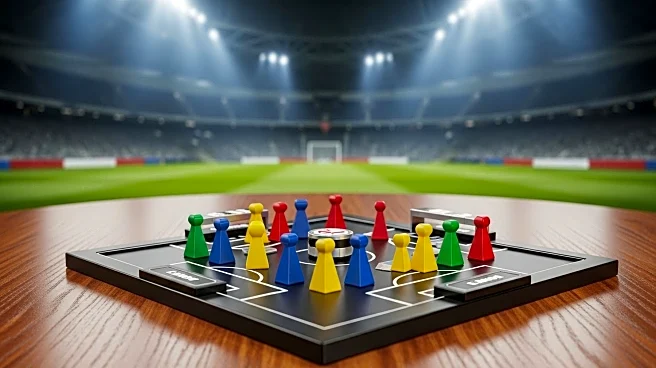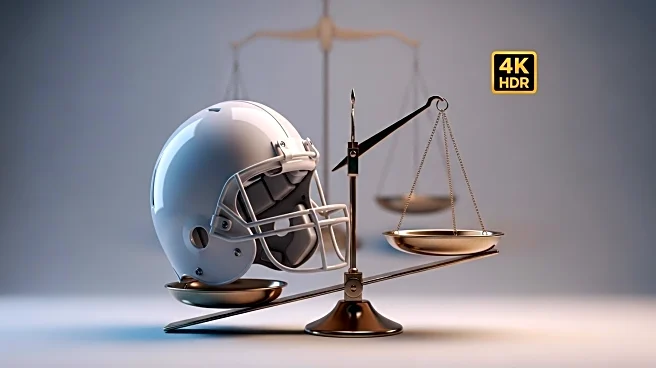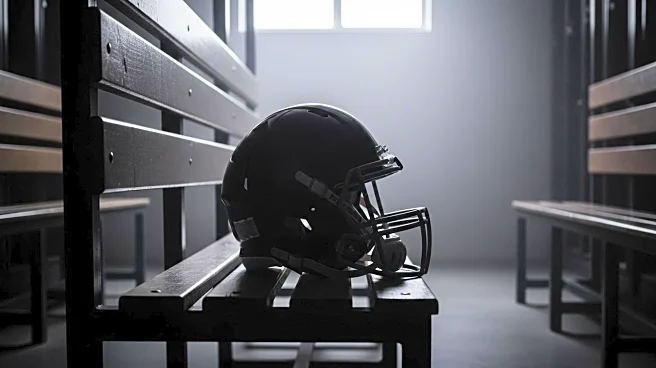What is the story about?
What's Happening?
Researchers at Boston University have conducted a study revealing that repeated head impacts in young athletes can lead to brain cell loss, inflammation, and vascular damage, even before the onset of chronic traumatic encephalopathy (CTE). The study, published in Nature, focused on athletes who participated in contact sports such as football, hockey, and soccer. Dr. Jonathan Cherry, the study's corresponding author, highlighted that these findings could significantly alter perceptions of contact sports. The research involved single nucleus RNA sequencing on brain tissue from 28 men aged 25 to 51, divided into groups based on their sports participation and CTE diagnosis. The study found neuron loss in all athletes, regardless of CTE presence, suggesting that brain injury from repetitive hits is not solely dependent on CTE.
Why It's Important?
The study's findings underscore the potential risks associated with contact sports, particularly for young athletes. The discovery of brain damage occurring before CTE development suggests that even sub-concussive impacts can have serious long-term effects. This research could influence public policy and sports regulations, prompting a reevaluation of safety measures in youth sports. It also opens avenues for therapeutic interventions to prevent progression to severe brain pathology. Stakeholders such as sports organizations, healthcare providers, and policymakers may need to consider these findings when developing guidelines to protect athletes from early brain damage.
What's Next?
The study suggests potential therapeutic interventions targeting the pathways identified in the brain, which could prevent progression to full CTE. As awareness of brain injuries in sports grows, discussions around the appropriate age for children to start contact sports may intensify. Dr. Cherry emphasized the importance of minimizing risk, possibly by delaying the start of contact sports or modifying practices, such as reducing heading in soccer. These considerations could lead to changes in sports training and safety protocols to better protect young athletes.
Beyond the Headlines
The study raises ethical questions about the responsibility of sports organizations to protect athletes from long-term health consequences. It also highlights the need for further research into the mechanisms of brain injury and the development of effective prevention strategies. The cultural significance of contact sports in the U.S. may face scrutiny as the public becomes more aware of the potential health risks involved.
AI Generated Content
Do you find this article useful?














